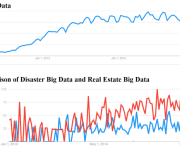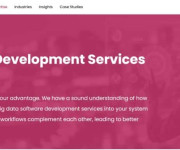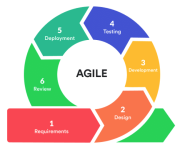How to Choose a 3PL Partner When Your Business Is Ready to Scale
There comes a moment in every growing business when the current setup just doesn’t work anymore. Orders are piling up, the storage space is maxed out, and the team is spending more time packing boxes than actually running the company. That’s usually when the idea of outsourcing warehousing and fulfillment starts to sound pretty appealing.
Third-party logistics providers handle the parts of business that take up the most space and time—storing inventory, picking and packing orders, and getting products to customers. But here’s the thing: not all 3PL companies are created equal. Choosing the wrong partner can create more headaches than it solves, while the right one can completely transform how a business operates.
Location Makes a Bigger Difference Than Most People Realize
Where a 3PL warehouse sits on the map directly affects how fast products reach customers and how much shipping costs. A warehouse in the middle of nowhere might have cheap rent, but if most customers are on the coasts, those savings disappear real quick with higher freight costs and longer delivery times.
The best 3PL locations offer access to major highways, proximity to ports or rail lines, and the ability to reach a large percentage of the customer base within one or two shipping zones. For businesses serving the East Coast and Southeast markets, working with a 3pl Atlanta service makes sense because of the city’s position as a distribution hub with excellent highway access and connectivity to major population centers.
Geography isn’t just about distance either. Some areas have higher labor costs, different tax structures, or seasonal weather that can disrupt operations. A warehouse in a region prone to hurricanes or snowstorms might save money on paper but cost more in delays and complications throughout the year.
Services Should Match What the Business Actually Needs
Some 3PL providers are basically just storage facilities with some shipping capabilities tacked on. Others offer everything from kitting and assembly to returns processing and custom packaging. The trick is figuring out what services matter now and what might be needed six months or a year down the road.
A business selling simple products that ship in standard boxes probably doesn’t need elaborate fulfillment services. But one dealing with subscription boxes, promotional kits, or products requiring special handling should look for a partner with those specific capabilities.
Returns processing is another area where capabilities vary wildly. Some 3PLs charge extra for every return and handle them slowly, while others have streamlined systems that get products back into inventory quickly. For businesses with generous return policies or products with higher return rates, this becomes a make-or-break factor.
Technology Integration Determines Daily Headaches (or Lack Thereof)
This is where it gets expensive if done wrong. The 3PL’s warehouse management system needs to talk to the business’s e-commerce platform, accounting software, and whatever other systems are in place. If the integration is clunky or requires manual data entry, errors multiply and time gets wasted.
Good 3PL partners offer real-time inventory visibility, automatic order import from multiple sales channels, and tracking information that flows back to customers without someone having to copy and paste it. The best ones have APIs that connect smoothly with major platforms and can handle custom integrations when needed.
But here’s what most people don’t see coming: ask about what happens when something breaks. Technology fails, systems go down, and connections get interrupted. A quality 3PL has backup processes and support staff who can troubleshoot issues quickly rather than leaving a business in the dark for days.
Pricing Structures Vary More Than Expected
3PL pricing can be surprisingly complex. Some charge per pallet stored, others per square foot. Some have per-order fees, per-item fees, weight-based fees, or all of the above. Then there are the extras: receiving fees, special handling charges, long-term storage penalties, and minimum monthly commitments.
The cheapest option usually isn’t the best value. A provider with rock-bottom prices might cut corners on accuracy, speed, or customer service. One with slightly higher rates but better performance can actually save money by reducing errors, preventing stockouts, and keeping customers happy.
Watch out for hidden fees that don’t show up until the first invoice arrives. Ask specifically about charges for things such as returns, order changes, rush processing, and peak season surcharges. Get the pricing structure in writing with examples based on the business’s typical order profile.
Scalability Isn’t Just About Having Extra Space
A 3PL partner should be able to handle growth without requiring a complete operational overhaul every time the business hits a new milestone. That means having physical space to accommodate more inventory, but also the systems and staffing to process increased order volumes during growth spurts or seasonal peaks.
Some 3PLs specialize in small businesses and struggle when a client outgrows their capabilities. Others focus on enterprise clients and don’t give smaller accounts the attention they need. The right fit depends on where the business is now and where it’s headed in the next few years.
Seasonal flexibility matters too. A business that does most of its sales during the holidays needs a partner who can scale up staffing and space temporarily without charging excessive fees or compromising on accuracy.
Communication and Support Separate Good Partners From Mediocre Ones
When something goes wrong—and eventually something will—how the 3PL responds makes all the difference. Is there a dedicated account manager who knows the business and responds quickly? Or does every issue require explaining the situation to a different person each time?
The relationship with a 3PL provider should feel collaborative rather than transactional. Good partners offer insights about inventory trends, suggest process improvements, and work proactively to prevent problems. Poor ones just follow instructions and point fingers when things go sideways.
Most businesses don’t think about this until it’s too late, but check how the 3PL handles communication during crises. A delayed shipment or inventory discrepancy handled well can actually strengthen the relationship. The same issue handled poorly can damage customer relationships and cost sales.
Making the Decision
Choosing a 3PL partner is ultimately about finding the right balance between cost, capabilities, location, and reliability. The lowest price rarely delivers the best results, and the fanciest technology doesn’t matter if basic operations aren’t solid.
Talk to current clients of any 3PL being considered. Visit the warehouse in person if possible. Ask detailed questions about their processes, peak capacity, error rates, and how they handle the specific challenges relevant to the business.
The right 3PL partner becomes an extension of the team, handling the logistics so the business can focus on growth, product development, and customers. The wrong one creates constant problems that drain time and resources. Taking the time to choose carefully pays off for years to come.
























